Nordnorsk Kunstmuseum’s collection belongs to everyone. Who are the artists represented, what stories do they tell? Today the collection numbers 2,255 works – 28% of these made by women artists, and 6.6% of the works in the collection are made by Sámi artists.
“Whilst these figures of representation (28%, 6.6%) in the collection are above the average for Nordic museums, there is nevertheless much work to be done to equitably represent and empower the complexities of the society we live in. Museums have the power to advocate for such key issues. To do so it is crucial that our sector – including Nordnorsk Kunstmuseum – take a self-critical approach and tackle the colonialist and patriarchal heritage upon which all museums were constituted” comments NNKM Director and Chief Curator, Katya García-Anton, about this first collection show under her new mandate.
The exhibition “28%”
There are less women in our collection than men, and there is less knowledge about them. These are imbalances which are reflected in contemporary society. And yet, one of the most important things that global society must do to bring prosperity and harmony to the world is to work on gender equality, as clearly stated in the UN’s Sustainable Development Goal 5: Achieve gender equality and empower all women and girls.
The exhibition “28%” presents women in the collection born before 1913 (when women obtained the vote in Norway) to give visibility to the imbalances of the collection and tell stories about what was important for these women in their time. The exhibition is a tool to build knowledge collectively on the women artists in it; to generate that knowledge we need to open the museum in new ways and engage with the rich diversity of our society. We do so in three ways:
- Medkvinner – a volunteer organization run by the Red Cross led by diaspora women settled in Troms municipality who support other newly arrived women to the region - intervene in “28%” bringing their own stories to it.
- Art history students from UiT (The Arctic University of Norway) research and write texts about the artworks in the exhibition.
- Fápmu, a creative knowledge space integral to the exhibition, to discuss art, the role of women in society, feminism, politics and everyday life from the perspective of whatever gender or sexuality you identify with.
The exhibition also acknowledges the contribution of the Viggo Hagstrøm donation that in 2013 helped to significantly boost the representation of women in our collection.
In each room in the exhibition you will see the reddish-orange color, from the UN’s SDG color wheel (gender equality) that indicates 28% of the display space. In here the 28% percent is filled with 74 of the 77 works by women artists from the historical part of the collection – craft, design, drawing and painting. The remainder of each room, the 72% – a space typically occupied by male artists (630 works) – is left open. During the exhibition period we will activate the openness as a space for community engagement and plurality of voices, connectivity and critical dialogue.
The artists represented in 28% include:
Betzy Akersloot-Berg (1850–1922)
Frida Hansen (1855–1931)
Georga Elisa (Leis) Schjelderup (1856–1933)
Signe Scheel (1860–1942)
Borghild Røed Lærum (1877–1959)
Sara Fabricius (Cora Sandel) (1880–1974)
Hanna Visund (1881–1974)
Ragnhild Keyser (1889–1943)
Ragnhild Kaarbø (1889–1949)
Hélène Perdriat (1889–1969)
Nora Gulbrandsen (1894–1978)
Joronn Sitje (1897–1982)
Gunvor Bull-Teilman (1900–1996)
Doro Dorothea Henriette Ording (1901–1993)
Else Christie Kielland (1903–1993)
Hetty Gleditsch (1906–1992)
Hanna Christie Abrahamsen (1907–1994)
Karen Holtsmark (1907–1998)
Synnøve Anker Aurdal (1908–2000)
Solveig Wiik (1908–2001)
Anna-Eva Bergman (1909–1987)
Benny Motzfeldt (1909–1995)
Gerd Ragna “Teddy” Røwde (1911–1994)
Charlotte Block Hellum (1911–2005)
Gunnvor Henriette Advocaat (1912–1997)
